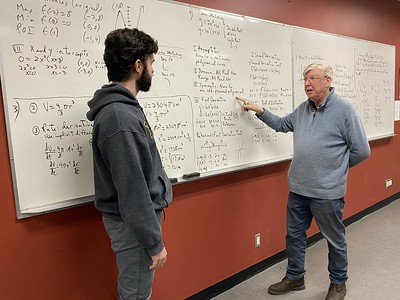Currently, there is a severe shortage of college graduates in science, technology, engineering, and math (STEM) fields. It doesn’t help that the common denominator in all these areas of study is mathematics. The failure rate in college math classes is substantial. In any given class, the non-passing rate (sometimes called “DFW” – for D, F, Withdrawal) could range between 25% and 50%, depending upon the mathematics subject.
A new study by Education Equity Solutions provides a path to reduce failures in community college math classes, and it would be relatively easy to implement. The study authors wanted to determine the best predictor of passing community college math classes. Using data from nearly 23,000 community college students in California, the researchers controlled for a wide range of factors, including the student’s race, gender, age, disability status, veteran status, high school GPA, prior “gateway” math instruction, high school attended, socioeconomic status, course length, class size, math subject, the instructor, instructor’s race and/or ethnicity, instructor’s age, instructor’s gender, and the average pass rate for the “gateway” math classes they taught the previous term.
The study authors determined that the single best predictor of a student’s successful completion of math classes was … the instructor! As it turns out, community college instructors have the largest impact on the passing rate for gateway math classes. If creating a larger pool of STEM graduates is essential, it stands to reason that improving instruction and instructional support will help ensure that students – especially minority students – pass their math classes.
These improvements might include reducing or eliminating the use of part-time instructors for core classes in mathematics. Instead, build a core of full-time instructors for STEM studies, which can increase the value of the instruction and the likelihood that students will pass the required mathematics courses.
Math classes are fundamental to STEM success
This is the perfect illustration of why reducing the size of the full-time faculty in favor of part-time instructors doesn’t support the students. If you want students to graduate in STEM fields, improve the instruction in science, technology, engineering, and mathematics. One way to do that is to reduce the number of part-time instructors.
Teaching is the full time responsibility of the professional faculty. Typically, full time faculty are not also working for multiple higher education institutions or in non-education jobs.
Community colleges cannot simultaneously say they support STEM education and student success while limiting the number of professional faculty members in these departments. Shifting these programs to use mostly full-time instructors may be the best way to ensure STEM student success.
Photo Credit: Camosun College , via Flickr

















